What You Need to Know About Choosing and Planting Perennial Flowers
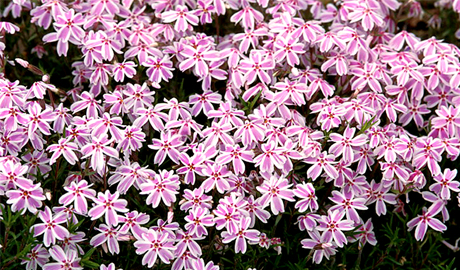
Perennials or Annuals?
New gardeners always ask about the difference between annuals and perennials. It’s a very simple distinction, but one that people often confuse. Annual plants have a life cycle that lasts for one growing season. They tend to bloom all season long from spring until frost and are often quite showy and colorful. They need to be replaced year after year. Perennial plants are the opposite. Their life cycle can last from three years or more (extremely hardy perennials can last up to 20 years!). Most perennials bloom for a shorter period of time than annuals so they are often planted with other perennials that bloom at different times during the growing season for a constant show of color in the landscape throughout the year.
When To Plant Perennials
The best times for planting perennial flowers are during the spring and fall. Planting during these seasons will ensure your plants grow healthy and strong. In the spring, you have warmer soil, plenty of rainfall, and longer days with more sunlight. Planting in the fall also has its advantages. Your perennials will spend the entire winter growing strong roots, which will allow them to bloom bigger the following spring.
Ways To Plant Perennials
There are three ways that you can plant perennial flowers and plants in your yard: container-grown perennials, bare-root perennials, and seeds.
Container-grown perennials: These are the flowers and plants you find at your local garden center, pre-planted in plastic pots or trays. They are the easiest option for planting perennial flowers. Simply dig a hole that’s deeper than the container and twice as wide, remove the plant from its container and drop it into the hole, and cover with soil. Be sure to water after planting.
Bare root perennials: These plants are dug up from growing fields when their roots are dormant, packaged, and kept cold until they arrive at your garden center. They are best to plant in the spring, after the last frost, when temperatures are between 45°F – 60°F.
Purchase bare root plants when you can plant them right away, so they don’t dry out. When planting a bare-root perennial, dig a hole twice as wide and as deep as the root ball. Create a mound in the center of the hole, place the root ball on the mound, and spread out the roots. Water your plant thoroughly after planting.
Seeds: Growing perennials from seeds is the least expensive option, but can be the most difficult. If you plant your seeds directly outdoors after the last frost, it will be late in the season until you finally see growth. Your best option may be starting your perennials indoors, in pots, during the winter months, and then transplanting them into your outdoor landscape when the temperature improves.
Choosing The Best Perennial Flowers and Plants
There are no two gardens that are the same, and for that reason, there are so many different perennials we could suggest for you. Take a look at the scenarios below and find plenty of examples of perennials that will work best in your yard.
Early Blooming Perennials
After suffering through a drab winter, are you eager for spring color to arrive as soon as possible? Of course, you are! When planting perennials in your yard, choose a few early blooming perennials that will bring a burst of color as early as March and April.
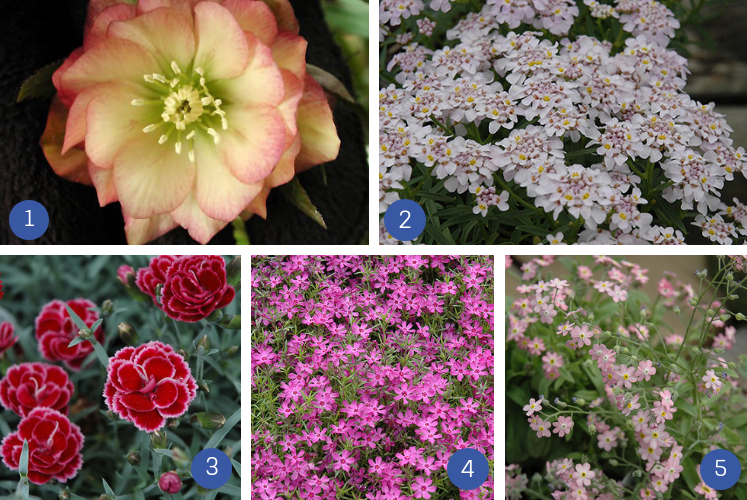
- Helleborus (Lenten Rose) — blooms in March
- Iberis (Candytuft) — blooms in April
- Dianthus (Pinks or Carnations) — blooms in April
- Phlox subulata (Creeping Phlox) — blooms in April
- Myosotis (Forget-Me-Not) — blooms in April
Long Blooming Perennials
In addition to perennials that bloom early in the season but fade away after a few weeks, you should also choose several long-blooming perennials. Long blooming plants typically bloom for a minimum of six to ten weeks. Adding these flowers and plants to your yard will ensure that you have color that lasts all summer long.

- Coreopsis (Tickseed) — blooms May – July
- Achillea (Yarrow) — blooms May – August
- Agastache (Hyssop) — blooms July – September
- Echinacea (Coneflower) — blooms June – September
- Gaillardia (Blanket Flower) — blooms June – August
- Leucanthemum (Shasta Daisy) — blooms June – September
- Phlox paniculata (Garden Phlox) — blooms July to September
- Rudbeckia (Black-Eyed Susan) — blooms July to September
Drought Tolerant Perennials
The dog days of summer often bring extreme heat and humidity, and very little precipitation, especially in the Central Pennsylvania region. This often leads to drought conditions, which can put a lot of stress on your landscape. The following drought tolerant perennials are hardy enough to withstand high heat and low precipitation.

- Achillea (Yarrow)
- Agastache (Hyssop)
- Gaillardia (Blanket Flower)
- Lavender
- Salvia (Meadow Sage)
- Sedum (Stone Crop)
Perennials for Sun or Shade
Some perennials thrive in full sun, while others tolerate areas of shade. How is your landscape situated? Is it flooded with afternoon sun or does a large tree or other structure cover much of your yard with shade? At your garden center, these are the sun and shade designations you’ll see listed on most plants:
- Full Sun — Six or more hours of direct sun a day
- Partial Sun or Partial Shade — Four to six hours of direct sun a day
- Full Shade — Less than four hours of direct sun a day
Perennials for Sun
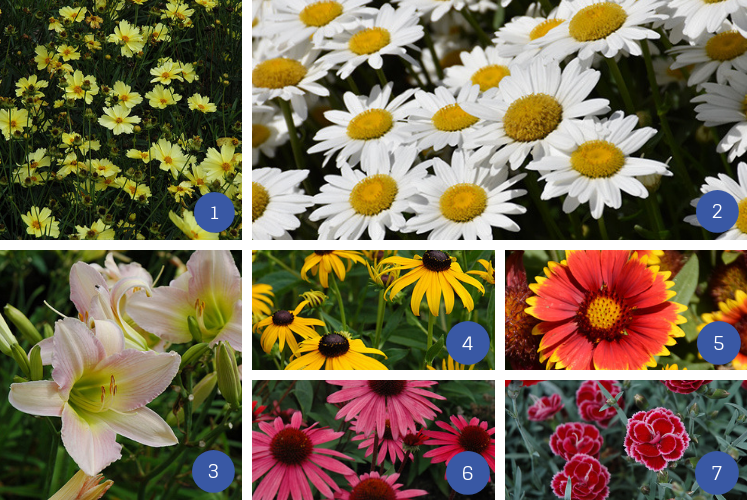
- Coreopsis (Tickseed)
- Leucanthemum (Shasta Daisy)
- Hemerocallis (Day Lily)
- Rudbeckia (Black-Eyed Susan)
- Gaillardia (Blanket Flower)
- Echinacea (Coneflower)
- Dianthus (Pinks or Carnations)
Perennials for Shade
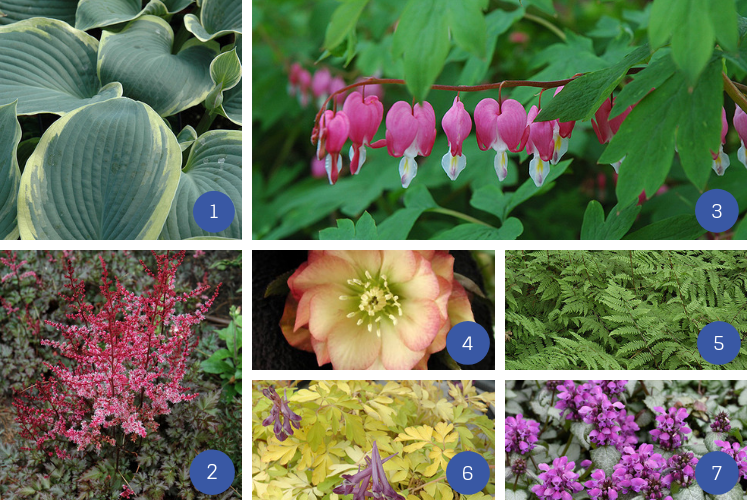
- Hosta (Plantain Lily)
- Astilbes (False Goat’s Beard)
- Dicentra (Bleeding Heart)
- Hellebores (Lenten Rose)
- Ferns
- Corydalis
- Lamium (Dead Nettle)
Perennials for Poor Soil
The ideal soil for planting has a rich, dark color (courtesy of its nutrients), is loose and breaks apart easily, and drains well. Unfortunately, not everyone’s garden is overflowing with healthy soil. Instead, you might find your garden has dry, sandy, clay, or rocky soil. This doesn’t mean your perennial plants are doomed. There are several varieties that can grow successfully in less-than-ideal soil.
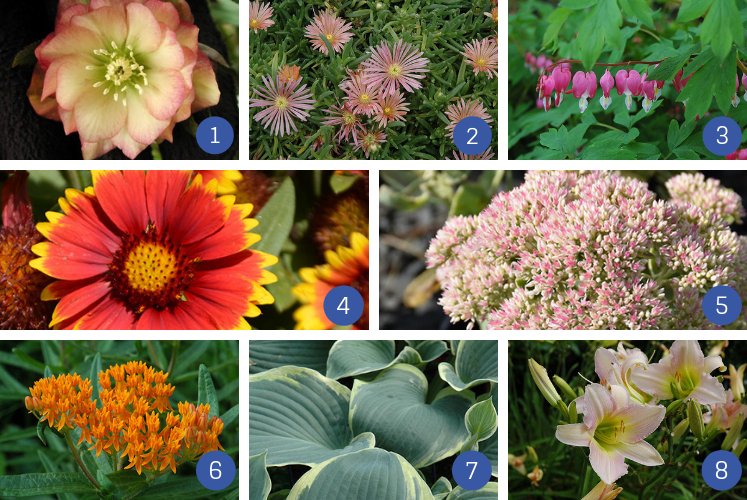
- Hellebores (Lenten Rose)
- Delosperma (Ice Plant)
- Dicentra (Bleeding Heart)
- Gaillardia (Blanket Flower)
- Sedum (Stone Crop)
- Asclepias tuberosa (Butterfly Weed)
- Hosta (Plantain Lily)
- Hemerocallis (Day Lily)
Fragrant Perennials
If you’re dreaming of evenings on your deck surrounded by sweet aromas, then you’ll want to select several fragrant perennials to add to your garden. The varieties listed below are known for being both appealing and aromatic.
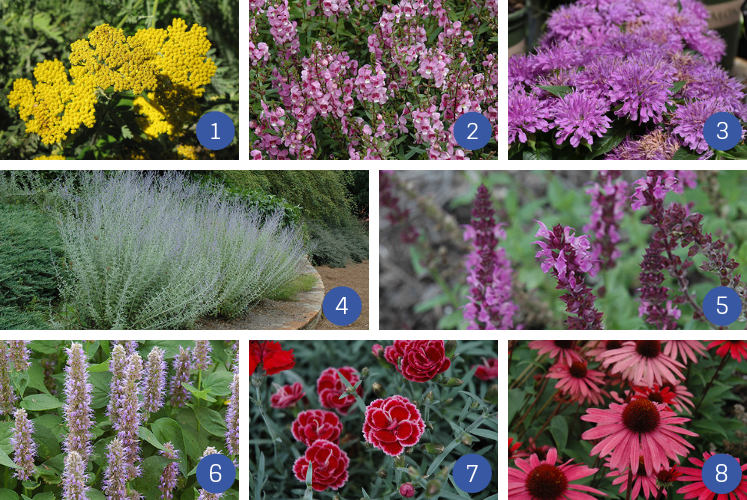
- Achillea (Yarrow)
- Lavender
- Monarda (Bee Balm)
- Perovskia atriplicifolia (Russian Sage)
- Salvia (Meadow Sage)
- Agastache (Hyssop)
- Dianthus (Pinks or Carnations)
- Echinacea (Coneflower)
Choosing a mixture of early blooming and late-blooming perennials, tall perennials and ground cover perennials, as well as perennials that grow in sun and shade will result in a visually stunning landscape that blooms year after year.
Are you inspired to choose perennials for your spring garden? In addition to the ideas above, use our Plant Finder to explore many other ideas for planting perennial flowers and plants.
